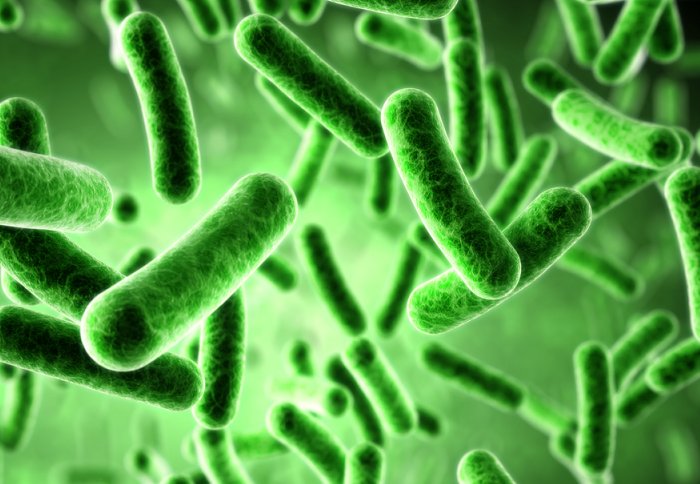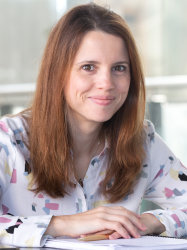

A new model is the first to link patterns of microbial growth observed by scientists over many decades to the mechanisms in living cells.
The computational model, created by scientists from Imperial College London and the University of Edinburgh, shows how the growth of bacterial cells is governed by the way cells allocate their limited resources to different cellular processes.
No cell has the resources to undertake all tasks at once at full pitch – different scenarios will require the cell to focus on one task to the detriment of another.
– Dr Diego Oyarzún
Junior Research Fellow
The research has potential applications in biotechnology, where scientists use microbial cells to produce chemicals, medicines or food (such as beer or bread) and so need to improve how quickly these cells grow. By providing a better understanding of the mechanisms behind cell growth, the model could also be used to improve antibiotics, which treat infections by preventing bacterial cells from growing.
The model, outlined in a study in Proceedings of the National Academy of Sciences, describes how cells convert nutrients to energy and use this to fuel protein biosynthesis and growth. It highlights the importance of three key trade-offs that arise due to resource limitations present in all living cells: a finite pool of energy, a finite cellular mass, and a finite number of ribosomes, which are the molecular machines responsible for assembling proteins. When a cell devotes resources to manage one particular task, for example to produce proteins that digest nutrients, it will necessarily limit the resources available to other tasks, for example for protein assembly. This affects how fast the cell can grow.
Dr Diego Oyarzún, from Imperial’s Department of Mathematics, explains: “The model is intentionally very simple, focusing on three fundamental trade-offs rather than trying to model every process in the cell. But it is the first to show how basic mechanisms and resource limitations impact on cell growth. No cell has the resources to undertake all tasks at once at full pitch – different scenarios will require the cell to focus on one task to the detriment of another.”
One such scenario is using microbial cells in biotechnology and synthetic biology, which involve inserting new pieces of genetic code into cells to make them produce a particular protein. Because this drains resources from other functions within the cell, they can die as a result or their behaviour can go haywire. The model could help to predict when this might happen, so the technology can be fine-tuned before it is tested in the lab.
The researchers verified the model using Monod’s Law, a phenomenon in cell growth first described in the 1940s: that if you give a cell more nutrients, it will initially grow faster and then its rate of growth will level out. The model showed how a cell is not able to increase resources devoted to growth indefinitely, but will naturally stabilise out at a certain point as it distributes resources between other processes in the cell.
Dr Andrea Weiße, from the University of Edinburgh, says: “The model reproduces the same growth behaviour that is seen in Monod’s Law, which we used as a reality check to show the model accurately reflects what is seen in the laboratory. We also tested it against two other known phenomena – observations on how cells change their composition in response to nutritional changes or upon antibiotic treatment. In both cases, the model also agreed with the experimental observations.”
Although the model is focused on bacterial cells, because the processes it incorporates are fundamental to all cells, the researchers believe it provides a backbone to model more complex cells, such as those in humans and other mammals. It may also be helpful in understanding the mechanism behind fast growing cells in cancer tumours.
Dr Oyarzún carried out the research as part of his Junior Research Fellowship at Imperial. The three-year scheme provides early career researchers with the freedom to build their own research agenda, without teaching or administration responsibilities.
Dr Oyarzún said: “I was incredibly lucky to be awarded the fellowship in 2013 as the process is highly competitive. The scheme has enabled me to focus on my research with full independence, giving me the time to put the building blocks in place for my future career. In the process I’ve been able to explore exciting new questions and to build collaborations across fields, including this one with Peter Swain’s and Vincent Danos’ research groups at the University of Edinburgh.”
-
‘Mechanistic links between cellular trade-offs, gene expression and growth’ by Andrea Weiße, Diego Oyarzún, Vincent Danos and Peter S. Swain is published in Proceedings of the National Academy of Sciences: http://dx.doi.org/10.1073/pnas.1416533112
Article text (excluding photos or graphics) available under an Attribution-NonCommercial-ShareAlike Creative Commons license.
Photos and graphics subject to third party copyright used with permission or © Imperial College London.
Reporter

Laura Gallagher
Communications Division

Contact details
Tel: +44 (0)20 7594 6701
Email: l.gallagher@imperial.ac.uk
Show all stories by this author




Leave a comment
Your comment may be published, displaying your name as you provide it, unless you request otherwise. Your contact details will never be published.